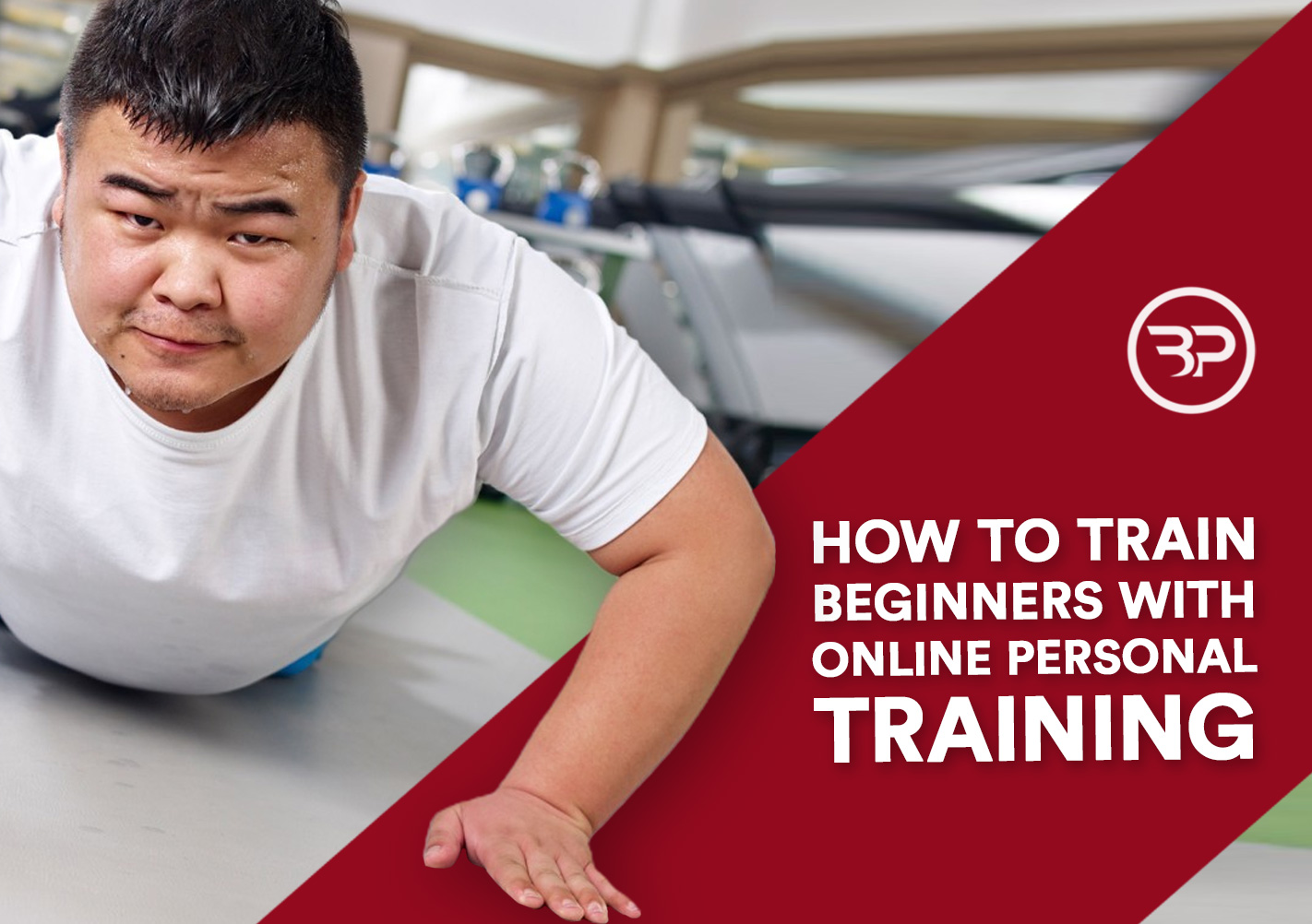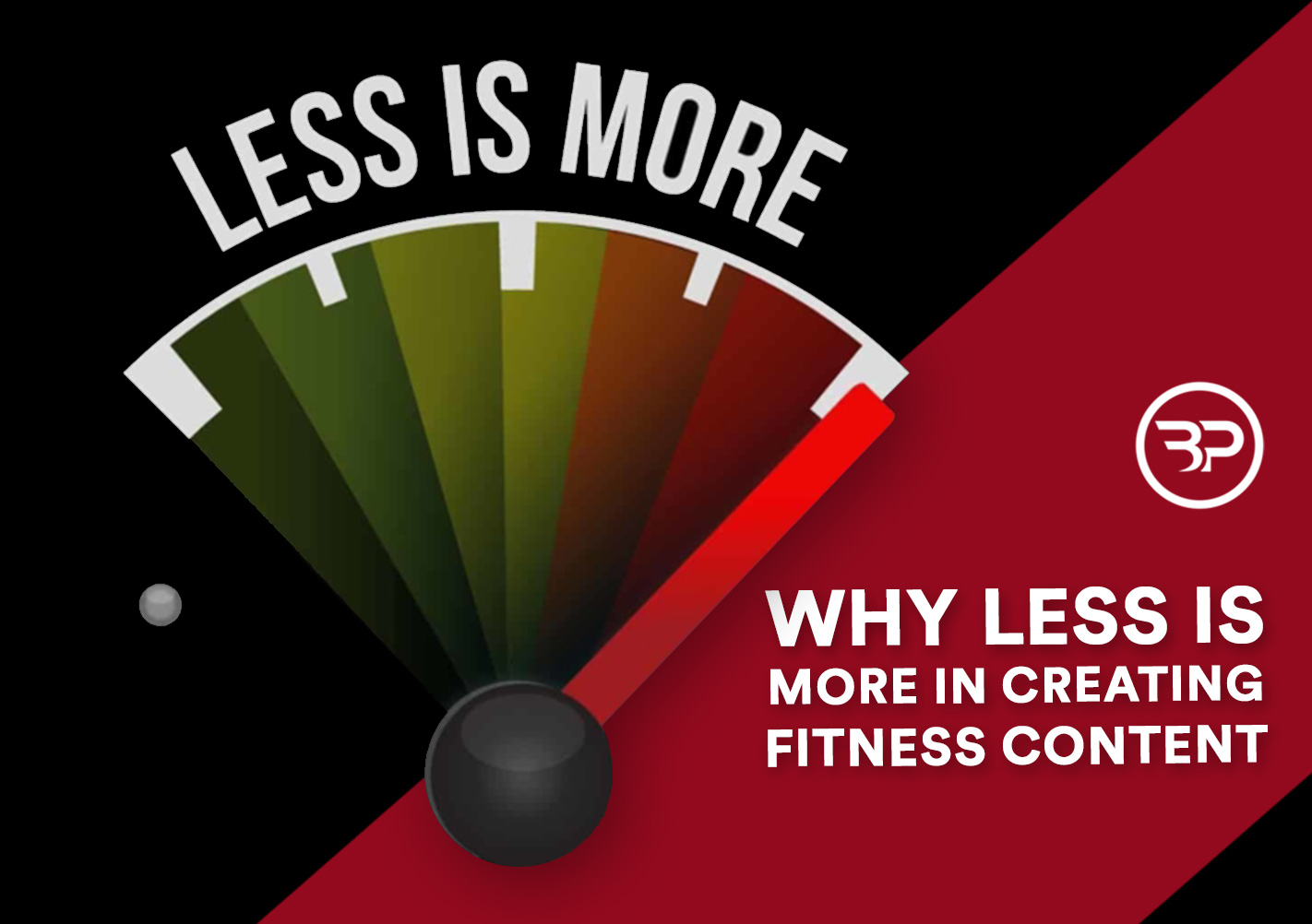How to Train Beginners with Online Personal Training
March 13, 2017
 By Eric Bach, CSCS is a personal trainer, author, and fitness business coach in Denver, Colorado. Eric’s passion is on simplifying the process of building an online fitness business and helping trainers overcome information overload to a build a successful fitness brand. For free marketing, sales, and content tips join the Bach Performance Hybrid Fitness Business Community here.
By Eric Bach, CSCS is a personal trainer, author, and fitness business coach in Denver, Colorado. Eric’s passion is on simplifying the process of building an online fitness business and helping trainers overcome information overload to a build a successful fitness brand. For free marketing, sales, and content tips join the Bach Performance Hybrid Fitness Business Community here.
The first rule for personal trainers is the same as for doctors: do no harm. It’s your job to prevent injury to your clients and improve their fitness and health.
So is it wise to accept beginners for online personal training?
And what the heck qualifies someone as a “beginner” in the gym?
Let’s define beginner as someone who isn’t proficient in basic movement patterns like the squat, hinge, push-up, or, and lunge. They struggle with basic gym terminology. (Did you say….Kettle Ball?) A beginner doesn’t grasp the idea of exercise intensity/frequency, the importance of recovery, or the basics of nutrition. A beginner struggles to exercise consistently and isn’t disciplined enough to make exercise a habit without support and structure.
Consider these numbers:
* As many as 67% of people who have gym memberships never use them
* Only 20.9% of adults meet the recommended guidelines for physical activity in the United States, according to the Centers for Disease Control.
* Only 12-16% of the American population belong to a gym or health club.
But the number of gyms and health clubs is rising. Kinesiology is one of the fastest-growing programs of US college campuses and personal trainer is one of the fastest growing occupations.
Much of the growth is fuelled by beginners, far and away the biggest market in the fitness industry. As a personal trainer, you have the opportunity to build a sustainable business by helping beginners lead better lives.
Can you train beginners online?
In a word, yes. You can train beginners with online training. But you must remember that every client is different and has different needs. You must take extra care and provide an extra level of support to ensure safety.
Then you’ll need to create habits and produce results.
Here’s how.
Liability and Insurance
Training someone online rather than in person does not mean you escape liability if they get injured. The most prudent course of action is to hire a lawyer to to craft an online training waiver that provides you maximum protection. Insurance for online personal trainers is still in its infancy. Check this provider and also ask your certifying organization if their insurance also covers online training. You also need to have your clients complete a basic Par-Q.
Perform a Thorough Screen
 Dr. John Rusin of Drjohnrusin.com says:
Dr. John Rusin of Drjohnrusin.com says:
“Online coaching takes away your eyes, ears and real-time common sense of training as a coach. You must do your due diligence to objectify movement capacity before prescribing exercise. For my clients, we go through the exact movement screening and pattern evaluation as I do in my physical location. Yes, it may take a ton more time, but the results speak for itself. If you are trying to make a safe and effective impact in the lives of your clients, this is a non-negotiable aspect of online training.”
Even though Dr. John has a broader scope of practice than most trainers because he’s also a licensed physical therapist, his message applies to all: you need to screen.
Have clients do some basic movements on a video call or have them submit recorded videos. Like in-person clients, online clients need to master basic movements before taking on heavy resistance or going “beast mode” in the gym. Do your assessments to stay ahead of the curve, customize your client’s programs, and keep your clients healthy, happy, and on track.
Teach Basic Terminology
A few months ago, my wife and I took an Italian cooking class. Now, I whip together a pretty mean steak and a few other dishes, so I thought I would be good to go here.
Oh boy, was I ever wrong!
Within the first five minutes the instructor blurted out terms like:
* Al Forno: an expression for baking a layered pasta
* Battuto: knife striking ingredients against the cutting board
*Arrabbiata: by personal favorite! It means “angry sauce.”
Failed attempts to pronounce the words left me red in the face, flushed and tingling with embarrassment that I had no idea what I was talking about. I was frustrated and uncomfortable that everyone else knew more than I did.
That’s how your beginner clients feel when you say stuff like: sets, reps, tempo, intensity, compound vs. isolation, and periodization.
You need to meet your clients where they are. Speak their language. Teach them step-by-step. gradually. Gradually introduce the basic terminology they’ll need.
Teach Gym Code
One of my first training jobs was at a high-end gym attached to a Ritz-Carlton in Denver. The crowd was mostly athletes and business people. But some of the hotel guests made their way down to hop on the stepper and get the occasional biceps pump.
Something that is seared in my memory: an older female hotel guest using the adductor/abductor machine, apparently attired in nothing but a robe. As the coach, it’s your responsibility to make sure your clients follow some basic rules of gym etiquette. Teach them to be kind and respectful of others, to be aware of personal space, and to ask for help when needed.
Every client, in-person or online, needs to know:
- How to put weights away
- Why they should use clips
- How to ask for a spot and how to give one
- Why they shouldn’t blow dry their…loins…after a shower in a packed locker room
Keep It Simple and Start Small
Your overarching message to beginners should be “You can do anything, but not everything.”
Misinformation abounds. After all, by the time people get to you, they’ve seen Biggest Loser, late night infomercials, and sleazy marketing claims about “watching the pounds melt off” with no effort.
Long-term change, the kind that creates life-changing transformations, takes a long-term approach. You have to build habits one by one and manage expectations.Work on one thing at a time for three to four weeks. An example might be drinking a 20-ounce glass of water on waking up then doing a warm up, as described here.
Move Beyond the Barbell
 Charles Staley says:
Charles Staley says:
“I love helping beginner clients, but I typically work with only those who want to lose fat. My clients fill out a detailed questionnaire for screening purposes (I won’t take folks with certain health issues) We focus on nutritional habits and increasing overall activity rather than solely focusing on resistance training.
A huge part of this type of coaching involves the development and sustainment of habits and strategies that will support the creation of long-term energy deficits needed for fat loss: goal orientation, self-tracking, environmental optimization, and social strategies, to name a few. I’ve had a lot of success with these types of clients and it’s certainly possible and incredibly fulfilling to see the changes they’re able to make.”
Determine Whether They Have “It”
 Dr. Joel Seedman says:
Dr. Joel Seedman says:
“Although working with beginner level online clients comes with obvious challenges, the protocols I use for accepting clients is nearly the same. I’m less worried about their current or pre-existing levels of training, fitness, or experience and more concerned with how mentally engaged and committed they are to the process.”
At the end of the day, you need to explain “why” you’re doing certain exercises with your new client’s fitness plan. Explaining “why” not only teaches your clients to become self-sufficient, it reinforces you as the expert who holds the solution to their problem. You need to meet your clients where they, find what makes them tick and explain why what you’re doing matters. More often than not, beginners need both an expert plan and someone to inspire action.”
The Takeaway
Yes, you can train beginners with online personal training. This will sharpen your skills as a coach. You’ll tap into a huge market to build a sound business and help people that need your expertise and guidance.
But beginners take a lot of work up front and a require serious attention to detail.
The Checklist:
- Take care of the formalities like waivers and insurance
- Put safety first
- Screen online clients as you would in- person clients
- Teach basic terminology and gym etiquette
- Keep it simple and start small to change habits
- Move beyond the barbell.
- Mindset matters. Meet clients where they are and build the “it” factor.
Above all else, remember there are no absolutes. You shouldn’t take every client that comes your way. You need to thoughtfully assess your ability to maximize the results for each client before taking them on.
P.S.
Would You Like To Make More Money & Work Fewer Hours With A Hybrid Fitness Business?
==>Click Here to Grab the Six Figure Fitness Business Guide. <==









